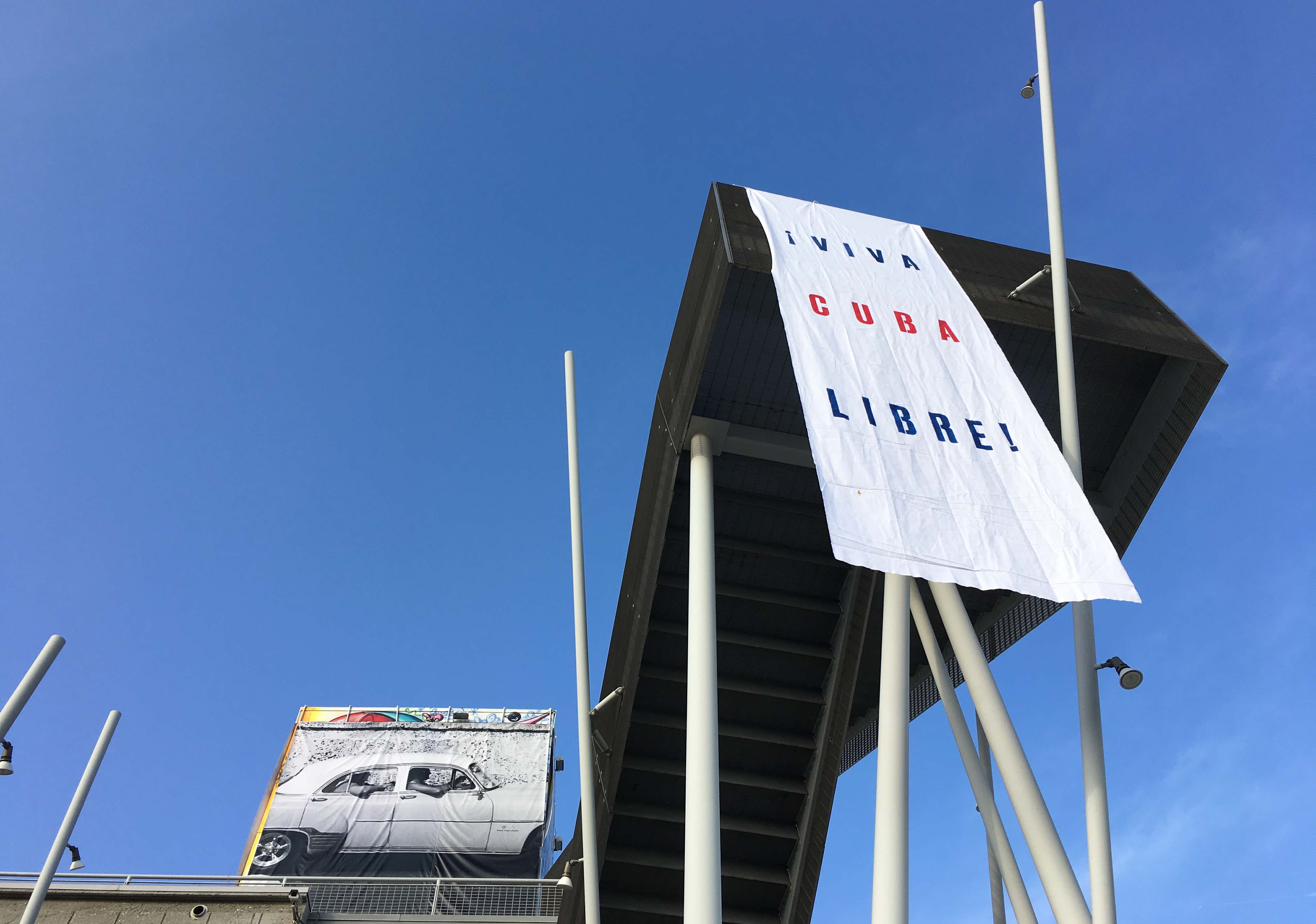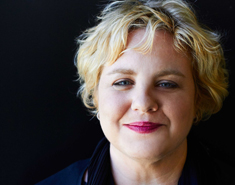Fresh Eyes Cuba: A Deep Immersion and Cultural Exchange in Havana
- Social Entrepreneurship
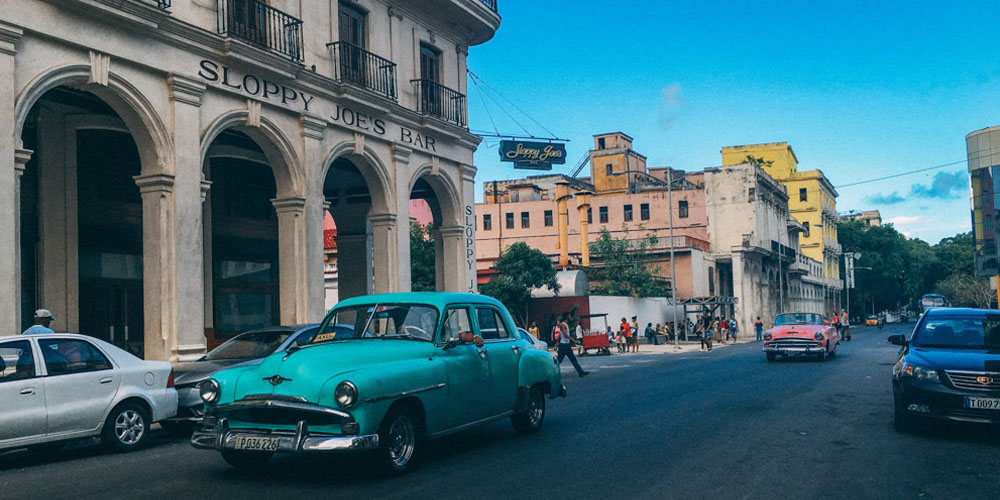
Fall 2016
The Fresh Eyes Cuba project was a 14-week intensive studio course, organized around a 10-day immersive trip to Havana, Cuba, the core cultural experience which informed the design briefs and outcomes of the studio.
Fresh Eyes Cuba was a Designmatters / Graphic Design Trans-disciplinary Studio and Study Away collaboration.
This project was made possible in part by support from the Designmatters Educational Program Grant from the Autodesk Foundation.
Recent Developments
Fresh Eyes Cuba: Publication Launch
In collaboration with ISDi, a small group of representatives from ArtCenter traveled back to Havana in June 2017 to re-create installations from the project as well as design the Fresh Eyes Cuba Publication launch exhibition for the Forma 2017 Conference.
Read more about the book launch here.
Project Background
This studio’s objective was to allow faculty and students to experience the exceptional ecosystem of innovation and creativity that Cuba presents in this historic moment in time as the diplomatic ties between Cuba and the U.S. are re-established. This is a time of opportunity: there is an opening to trade and commerce and Cuba has become a hotbed for innovation with a drive for entrepreneurship. A key part of the project was a cross-cultural collaboration with the communication design students of the Instituto de Diseño (ISDi), Cuba’s only design school. Faculty guided all of the students in a 4-day workshop that brought together both student groups to learn through sharing their different lived-experiences and perspectives. The workshop was highly experimental and a multi-sensorial, cross-cultural exploration.
The project tapped into expertise of the leaders and Cuban network of the Incúbate initiative (a spin-out program of the Fringe Diplomacy Program of the Aspen Institute in partnership with Uncorked Studios and Flow Collective), which is connecting American and Cuban entrepreneurs and creatives to exchange knowledge and insight. Prior to the trip to Cuba, students conducted in depth research on the history and current state of Cuba, guided by lectures from guest experts. David Ewald of Uncorked Studios and Mara Abrams of The Flow Collective shared their experiences connecting with Cuban entrepreneurs through service design workshops run by Incúbate. Mrinalini Tankha, PhD of the Institute for Money, Technology and Financial Inclusion at the University of California, Irvine, lectured for two sessions in the studio to give the students a firm grounding in the history and economics of Cuba.
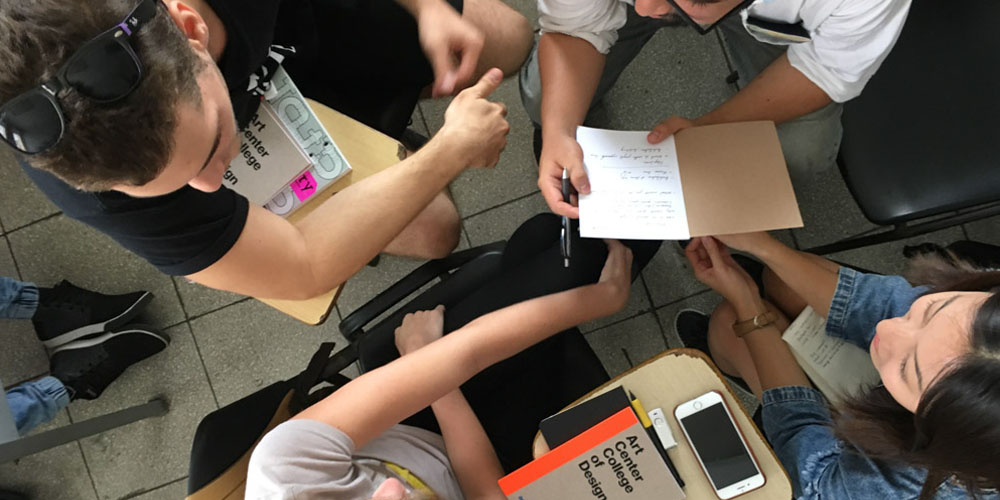
Field Research: 10 Days in Havana
Faculty and students arrived in Havana on October 9 to begin their immersion in Cuban life and culture. The students started by exploring old Havana and taking a tour of the restored neon signs throughout the City, and dinner at the studio of Cuban artist Kadir Lopez. Students also saw Cuba outside of Havana, hiking the Cuevas de Santo Tomas near Viñales, and sharing a meal at an organic farm.
The highlight and key experience of the week was the 4-day experiential workshop in collaboration with communication and industrial design faculty and students at the Instituto de Diseño (ISDi), Cuba’s design school. Fresh Eyes Cuba faculty Nik Hafermaas and Tracey Shiffman guided the group of 14 ArtCenter students and 21 ISDi students through a series of prompts and exercises designed to break down barriers and allow the students to share and understand one another’s unique perspectives. The ArtCenter and ISDi students formed deep connections, spending time with one another outside of the confines of the workshop to play dominos, listen to music, and talk about pop culture, politics and art. These connections formed by the students lead to a strong collaboration on the outcomes of the workshop. The students broke into 7 teams, each team with 2 ArtCenter students and 3 ISDi students, to conceptualize and build interactive “pop-up” installations. This division allowed for an exchange of ideas and skills for the students as they pushed their own creative boundaries, with the Cuban students exploring emotional, personal and political concepts and the ArtCenter students maximizing the impact of the installations by creatively utilizing the limited time and resource available. The final pop-up exhibition was attended by 200 people, including students, faculty, and staff from ISDi and members of the public.
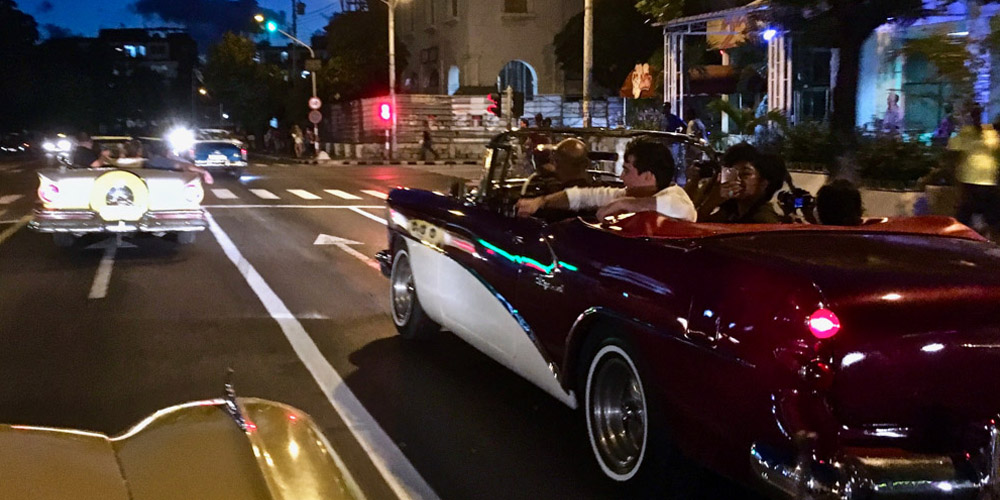
ArtCenter + ISDi Workshop
October 11 – 14, 2016
These seven installations are the outcome the collaborative workshop held in Havana with fourteen ArtCenter students from the Fresh Eyes Cuba studio and twenty-one students from the Instituto de Diseño (ISDi).
ArtCenter and ISDi faculty challenged students to work in teams to create pop-up exhibitions that would engage participants in a visceral manner. The students were guided to utilize their sensory aptitude while actively exploring and embracing the context of present-day Havana and issues that are of significance for the ISDi students and their community.
The teams were thrown into an intense development and production schedule that forced them to rapidly learn from and about each other and their cultural contexts, and overcome material and time constraints to bring to life their concepts for all of ISDi’s community to engage with.
ISDi Pop-up Installations
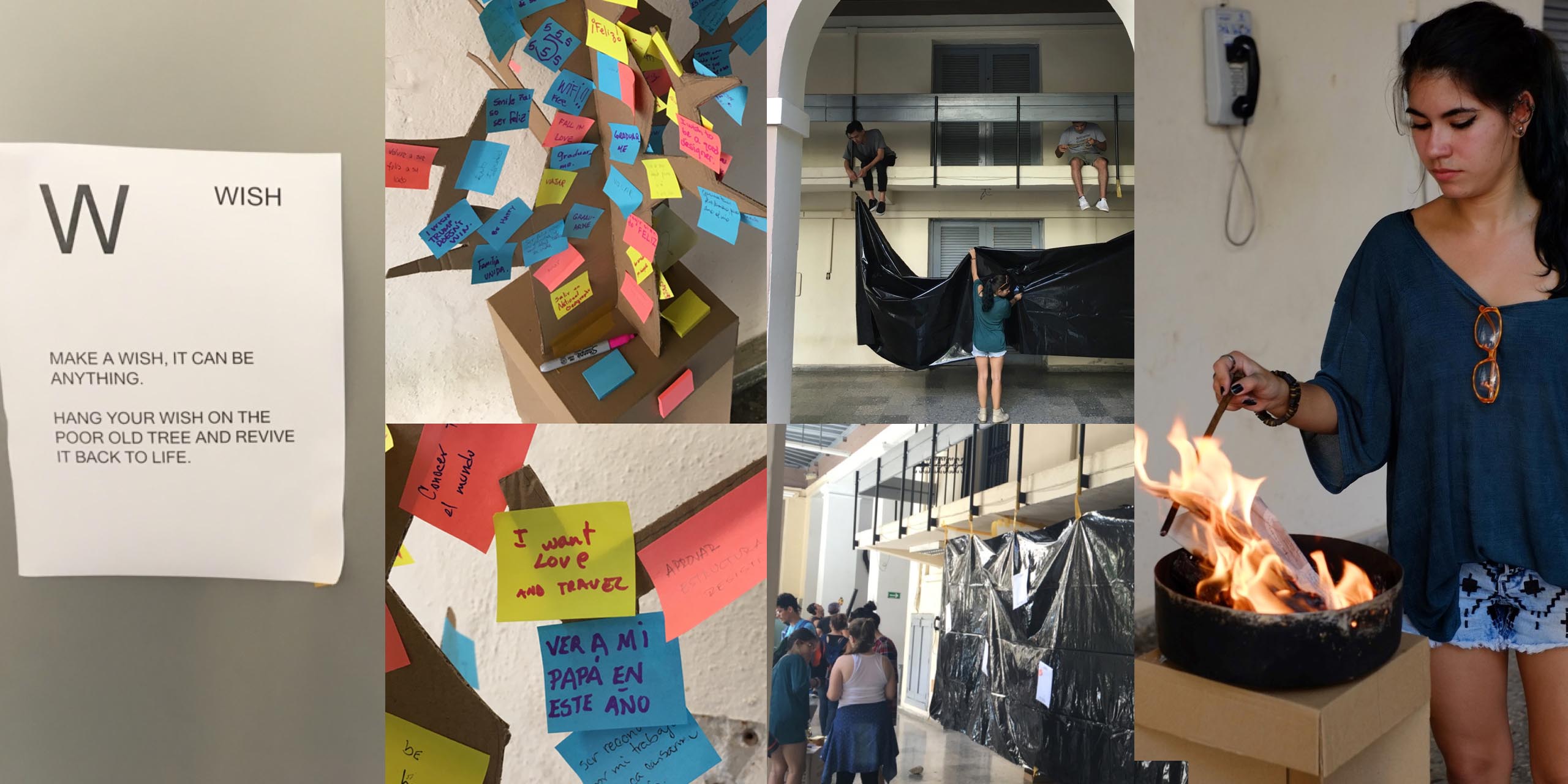 close
close
I WAS ____
Read moreMaysa Fernandez, Ricardo Imperial, Tais Kostromina, Patricia Rigali, & Isaac Ruiz
This interactive installation invites participants to record their dreams and aspirations for a brighter future and to shed emotional baggage and memories from past experiences of hardship. The temporal sequence of the installation takes participants through a tunnel-like maze that is comprised of a cardboard wishing tree to record their dreams, a room to give and take advice from others, and a space with an open fire to burn secrets from the past. The performative and confessional aspect of the installation harnesses the ambivalence of Cuban youth who are living in a time of profound political, economic and cultural change.
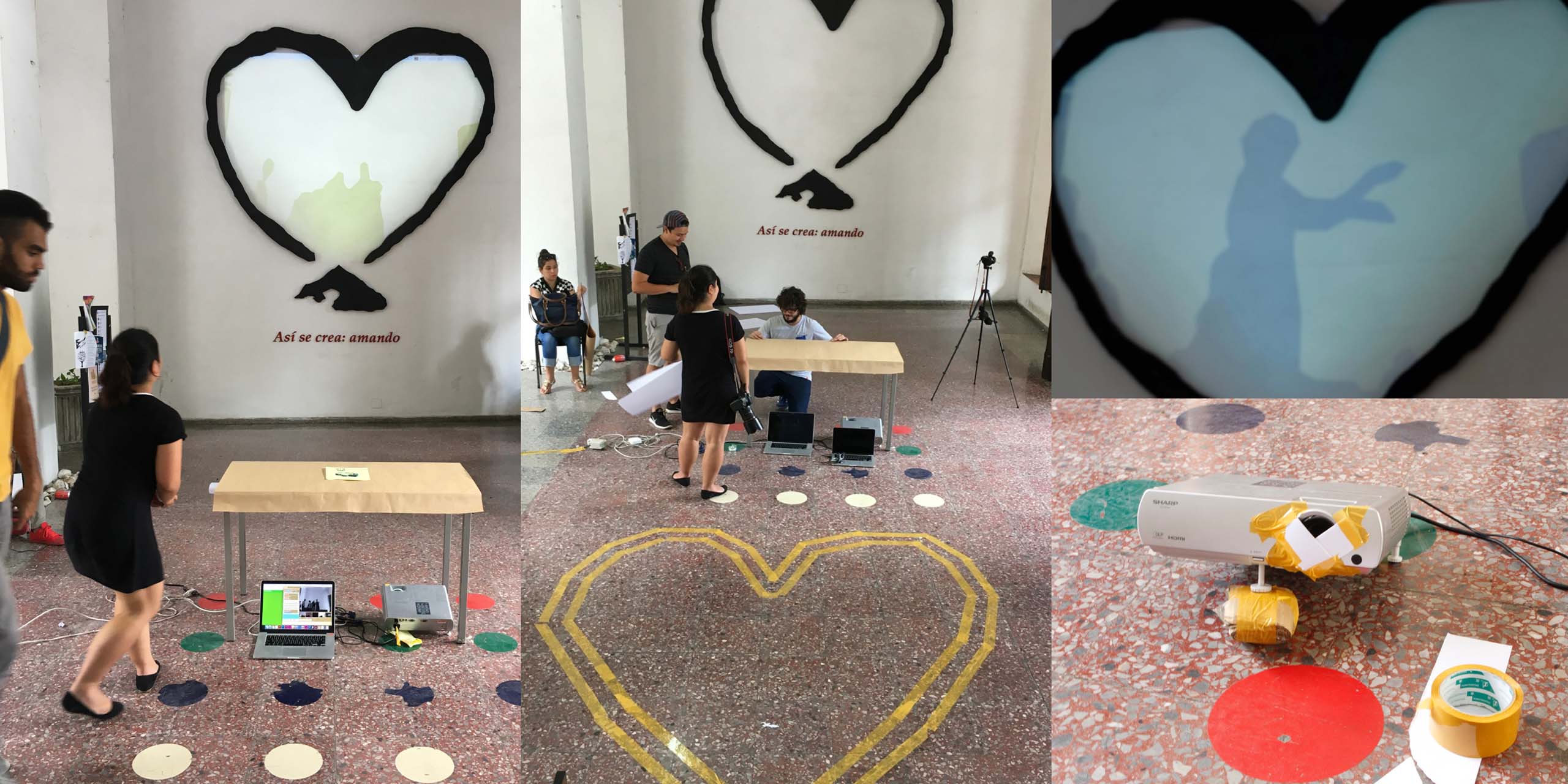 close
close
INSTAGRAT
Read moreJavier Amaro, Xavier Arenas, Matthew Herrera, Suyu Ren, & Carlos Romero
This installation is a site-specific sound and projection experience conceived as a disruptive intervention in the entrance lobby of ISDi. It engages participants to interact with a music soundtrack and a projection of a rainbow of colors, while watching their dancing silhouette reflected onto the iconic heart-shaped sculpture in the lobby. The installation animates Cuban poet and national hero Jose Martí’s quote about the deep emotion behind the act of creativity: “Asi se crea: amando.” The intent is to remind everyone about the unique joy, liveliness and dynamism of the Cuban people. The installation also aims to create a jolt of energy that disrupts a prevailing sense of boredom and weariness about the lack of novelty in daily life that many Cuban youth contend with.
 close
close
TIEMPO MACHINE
Read moreVictor Artiga, Helena Fernandez, Frank Garcia, Yeun Kim, & Jose Ramirez
The rudimentary megaphone created for this installation hangs out from the balustrade of the top floor of ISDi’s building, onto the central courtyard. An outlet for emotional catharsis, it invites participants to express themselves by shouting out impromptu statements that they can hear echo throughout the courtyard. Amplifying voice and encouraging freedom of expression, the intervention captures underlying currents of frustration many young people in the island nation feel in the context of a Cuban society caught between the overbearing isolation of the past and the relative new openness of the present.
 close
close
CHURRO HABANEROS
Read moreEmmanuel Cordova, Fabiana Fernandez, Gabriela Galan, Tais Ghelli, & Nico Ramirez
The churro cart is one of the great rituals of life in Havana’s cobblestone streets. Packed in paper cones, the sugary treat represents an ubiquitous snack food enjoyed by tourists and locals alike. This installation replicates the churro stand as a place to purchase and exchange drawings, stories and poems that celebrate Havana as a vibrant city. The installation prompts participants to draw actionable messages with chalk in the surrounding area of the churro cart. The invitation is for participants to voice their care for their own community and love for the place. The intervention is a call to action for a new appreciation for the beauty and good things Havana has to offer.
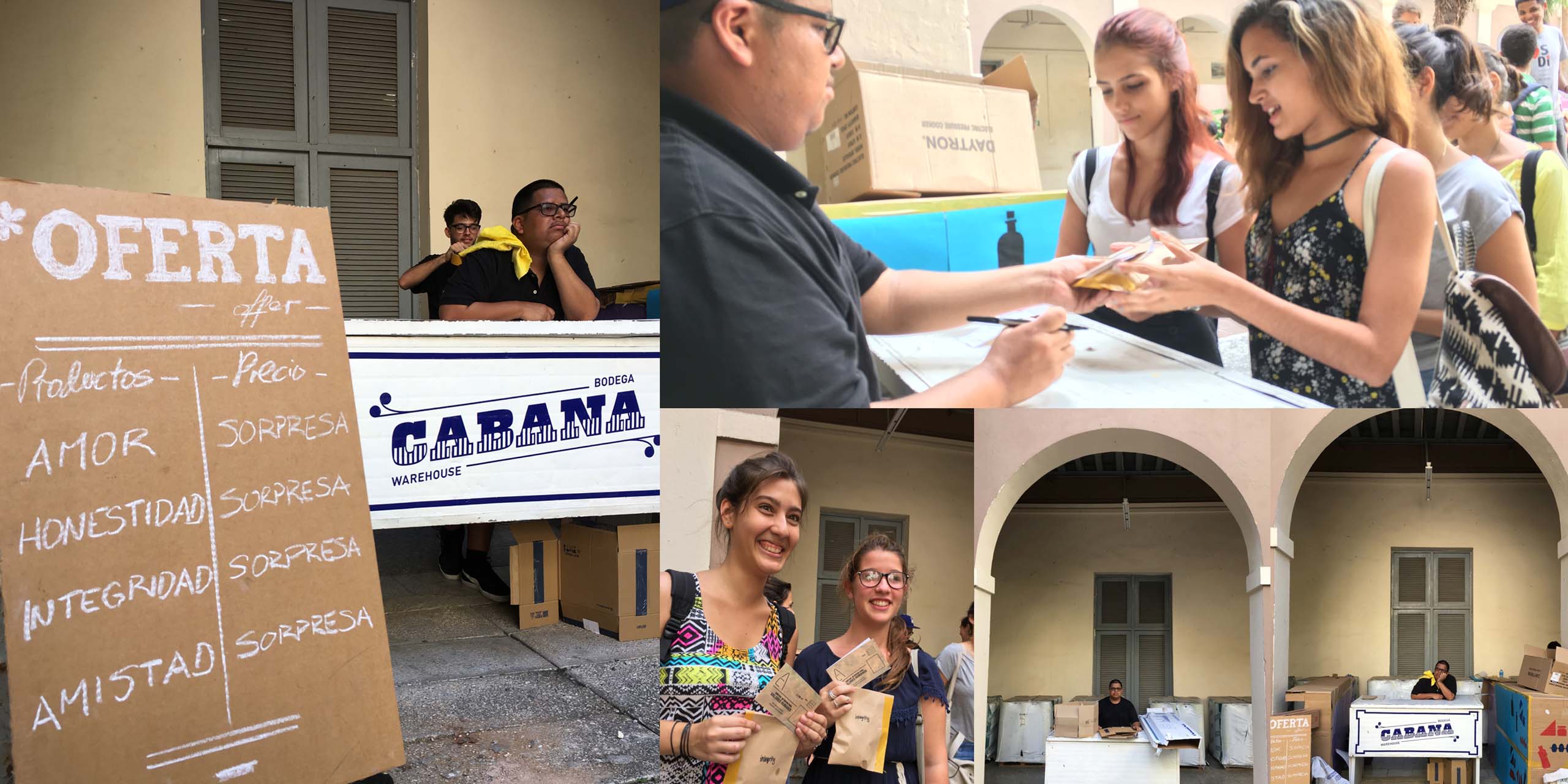 close
close
CENTRO CABANA
Read moreAdrian Alverez, Diego Gzegozewski, Mikey Rosales, Ernesto Valladares, & Viviyan Zoechling
The installation hijacks the traditional Cuban bodega (the neighborhood convenience store that specializes in distributing food rations, a system in place since 1962). A redesigned ration card, the libreta de abastecimiento that each Cuban citizen owns, establishes a new type of essential list of supplies. Instead of being provided with the commonly distributed goods such as for example rice, beans, and milk, these new rations are meant to supply moral values that nurture strong communities instilled with integrity, love, respect, etc. An exchange of sweets and cans of soda become rewards for those who adhere to their rations.
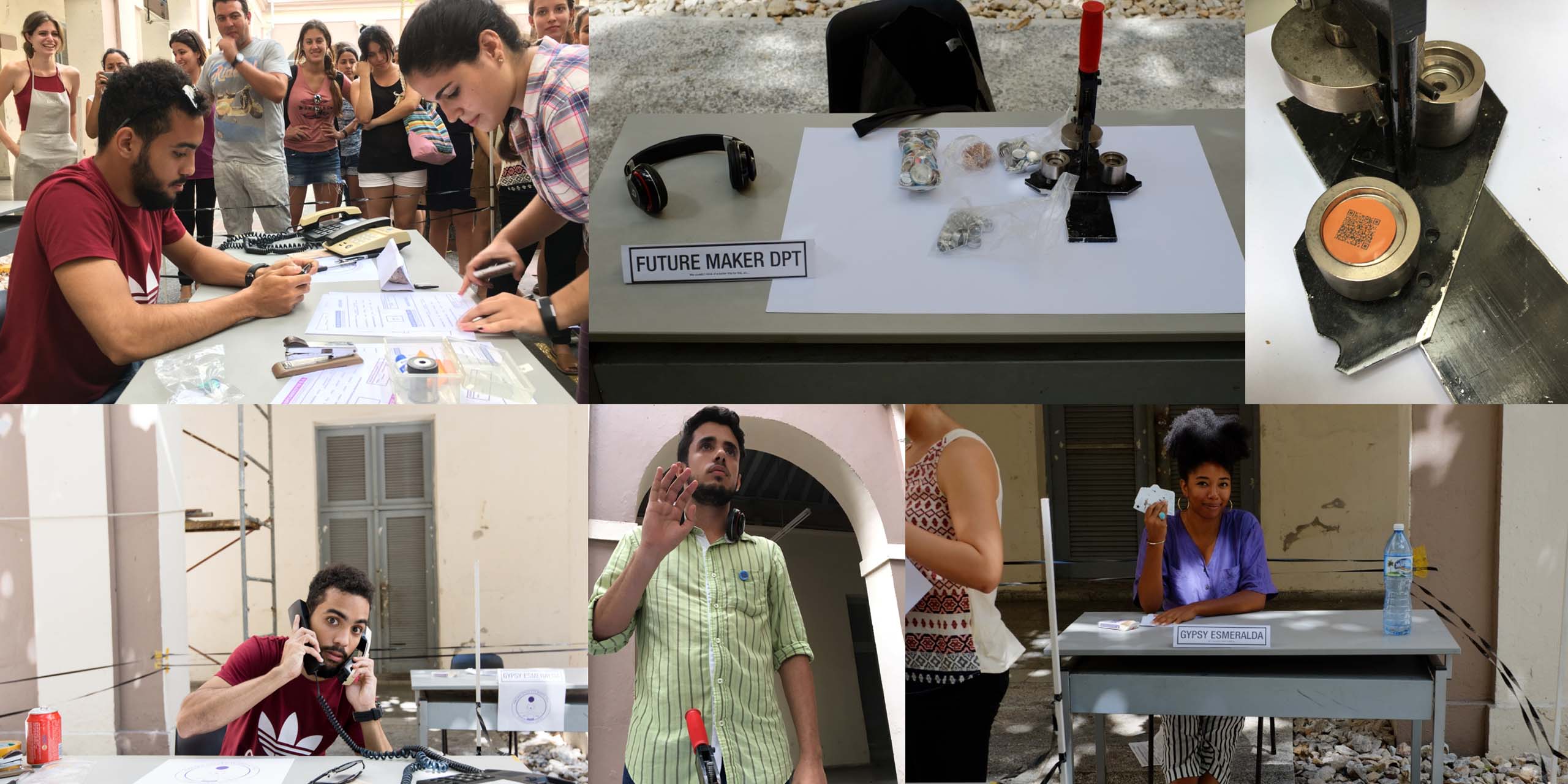 close
close
BUROCRACIA
Read moreLisandra Aguilera, Grace Haynes, Oscar Navarro, Kevin Serrano, & Eric Valdez
Government bureaucracy in Cuba can be overwhelming. It is often the source of absurd procedures, useless paperwork and inefficient formalities that can undermine daily tasks for Cubans and drain their entrepreneurialism and creative energy. With the satirical title, Minesterio de Administración de Sucesos y Predición de Cosas que no han Sucesido Todavía pero van a Suceder S.A (Ministry for the Adminstration of Events and the Prediction of Things that Have Not Yet Happened But Will), this installation is designed to inspire participants to take control of their own future. The installation makes participants navigate a familiar-yet-tedious bureaucratic scenario through a set of stations where they perform different paperwork procedures before receiving a newly-made QR Code button that provides them with their fortune.
 close
close
REBÉLATE
Read moreDiane Belmonte, Luisa Betancur, Karlo Francisco, Eric Perez, & July Sanchez
Despite cultural changes afoot, there is a lack of privacy in Cuba, and freedom of expression remains tightly controlled by the government through patronage and censorship. Rebélate created a place that is familiar, safe, and somewhat private for people to express themselves, reveal their thoughts, and feel free. The symbolic installation creates an enclosed environment with sheets that includes a commode at the center. The provocation is to offer this most private and intimate place as a safe haven for rebellion and expression.
Fresh Eyes Cuba Exhibition
December 7, 2016
The students and faculty returned to ArtCenter to reflect on their transformative collective and personal experiences in Cuba, and translated their experiences into a series of personal and team-created installations for an exhibition. The Fresh Eyes Cuba Exhibition was mounted at ArtCenter College of Design on December 7th, in conjunction with the Testlab Berlin exhibition, the outcome of ArtCenter’s ongoing immersive Berlin program.
The Fresh Eyes Cuba exhibition celebrated the fragile beauty, vibrancy, and ingenuity the students encountered first-hand as they lived and learned in the evolving cultural scene of Havana and reflected the deep immersion and cultural exchange with students from ISDi. The exhibition was conceived as Left Eye/Right Eye reflections, with the Left Eye representing individual projects that brought to life deeply personal moment experienced in Cuba, while Right Eye installations, conceived in teams, depicted unifying observations and experiences that students shared with one another.
Exhibit Outcomes
 close
close
Exhibition Branding
Read moreIsaac Ruiz and Ricardo Imperial
Setting the tone for the installation, branding elements captured the Cuban essence through imagery, colors and delivery methods that included material re-purposing and analog technology. The hand-set type exhibition logo was created using ArtCenter’s Archetype Press. Each printed invitation contained a unique photo curated from student photographs. The digital invitation was derived from a student video that followed an egg-shaped lemon-colored taxi driving through the streets of Havana. At the installation, lighting was manipulated by inserting cardboard pieces into the overhead fixtures, a technique inspired by Cuban resourcefulness.
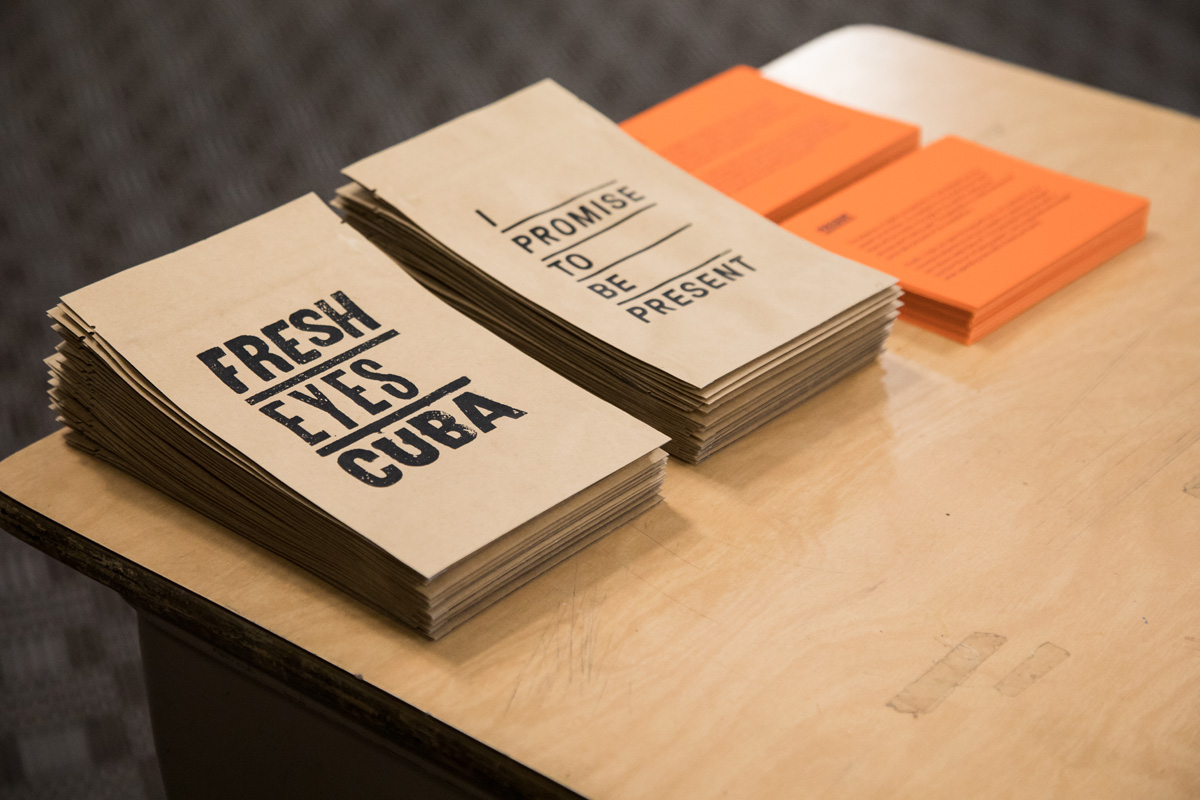 close
close
Present
Read moreNico Ramirez
Cell phones can distract from being in the present and experiencing life as it unfolds. Upon entering the exhibition, visitors were advised to place their cell phones in a special pouch and only use their phones to snap photos. Student watchers were on duty to remind visitors, who may have inadvertently reached for their phones, to be in the moment. This lack of internet access mimicked the ArtCenter students’ experiences in Cuba where, because of sparse internet connectivity, citizens had more interpersonal interactions with their neighbors and community.
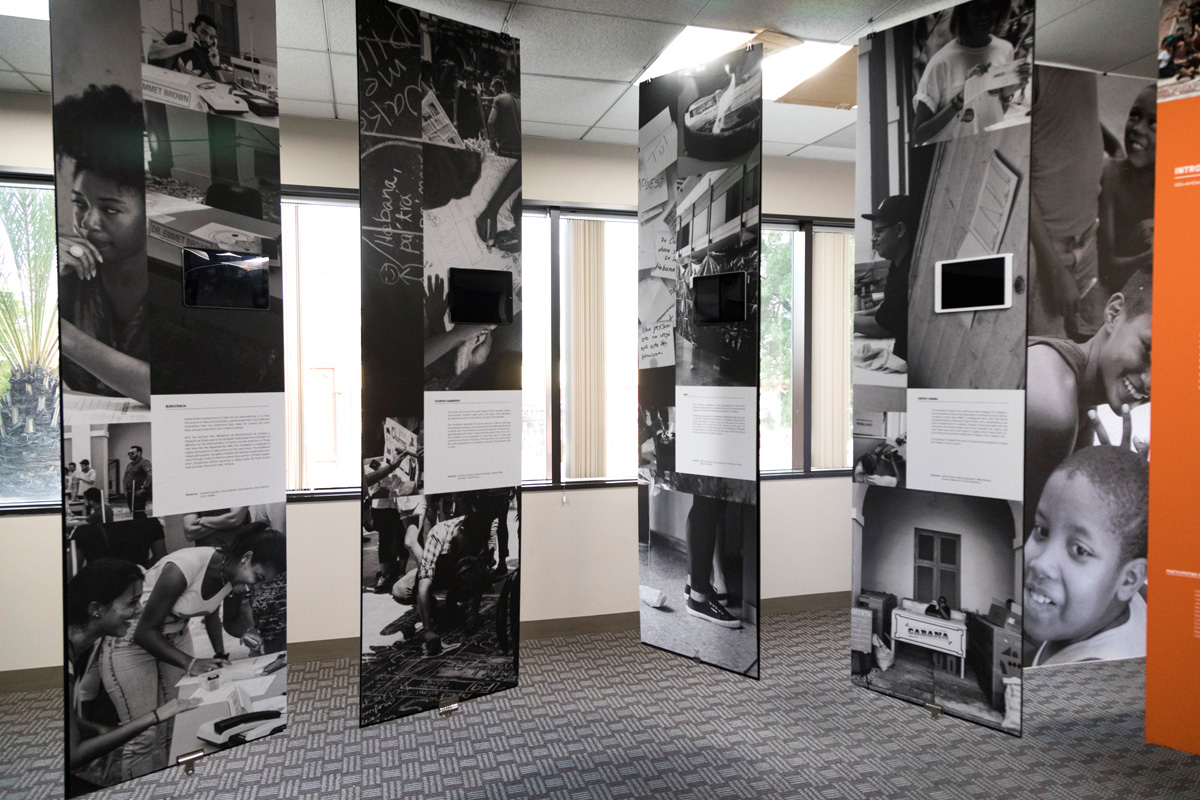 close
close
The ISDi Collaboration
Read moreNico Ramirez and Tais Ghelli
Representing the collaboration between ArtCenter and ISDi students, seven hanging panels depicted the seven pop-up installations created during the four-day deep immersive workshop in Havana. Video and text elaborated on the social issues identified by the groups and the subsequent process to create pop-up installations with limited resources that offered interactive commentary on the political and personal.
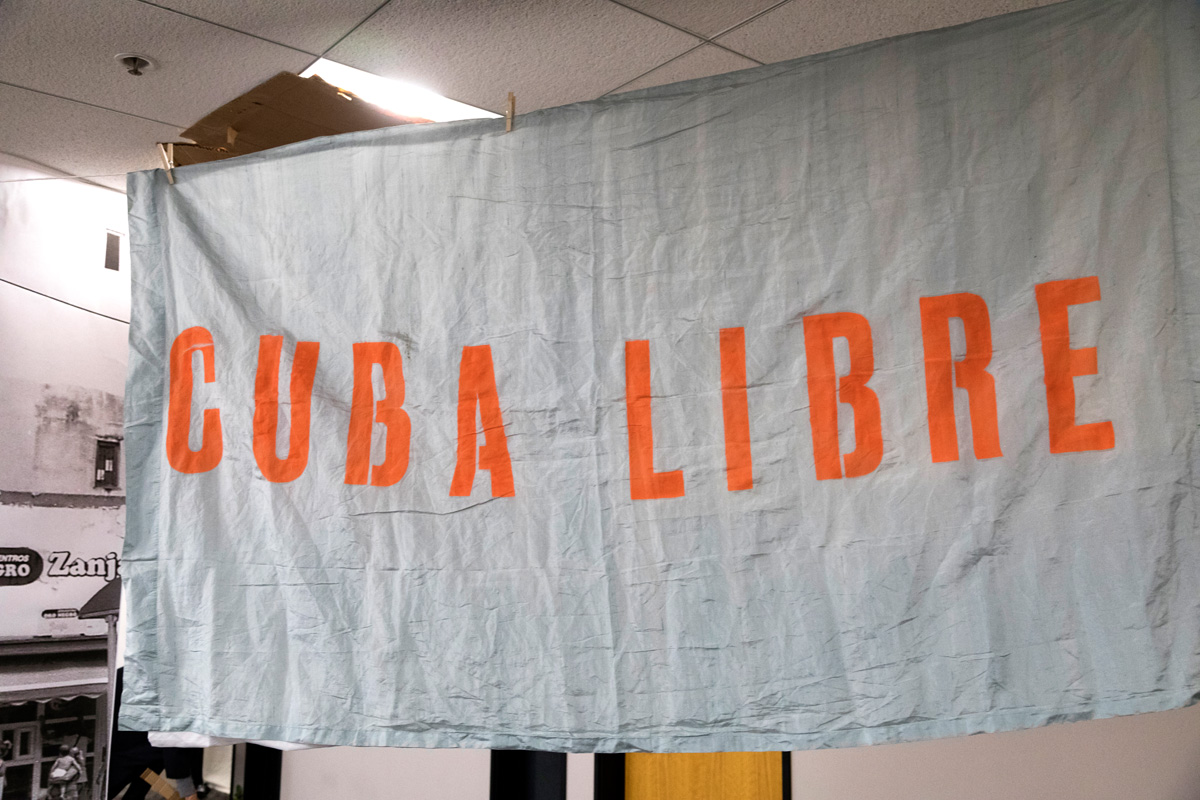 close
close
We Are Here
Read moreVictor Artiga and Yeun Kim
An everyday walk on Havana streets routinely offered images of colorful laundry hung between apartments and buildings, a metaphorical and visual cue that even amidst decaying structures, people and families exist in these seemingly forgotten spaces. Scattered among the entire exhibition were silk-screened banners hung with clothespins like drying laundry. Some banners contained stenciled Cuban affirmations, slogans and jokes, emphasizing the human element.
 close
close
The Box
Read moreIsaac Ruiz
New countries and experiences can produce a sense of discomfort and a feeling of being out-of-place for travelers. This installation involved a projected wall video of a car ride through the streets of Havana. In the center of the installation, a box emitted hard-to-hear muted conversations, symbolizing a newcomer’s frustration at being on the outside and not fully comprehending the language as well as the surrounding lives and culture.
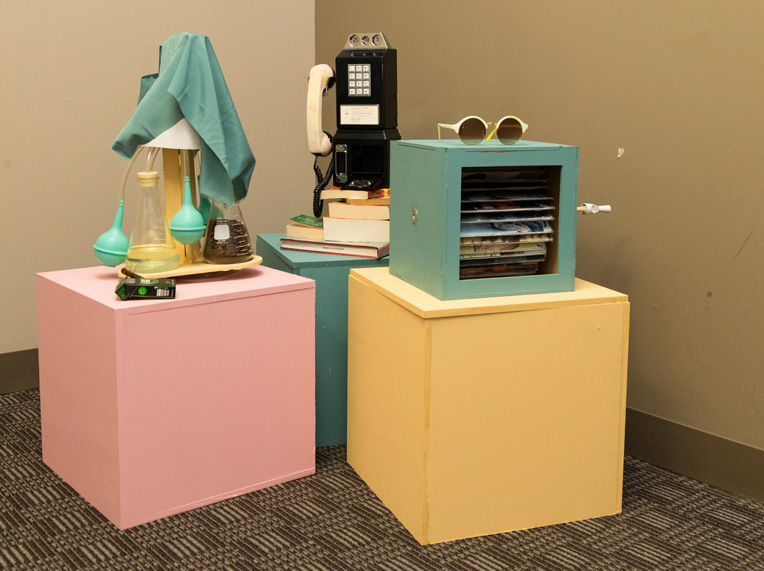 close
close
Playground
Read moreSuyu Ren
In this installation, playful objects were positioned low to the ground, so visitors must bend over or sit on the ground to explore three sensory aspects of Cuba’s urban environment. Crafted like an old-fashioned rolodex, photographs of Cuban people, animals and images circularly flipped around, blending into one another. Visitors sniffed from three vials of scents that typically perfume Havana streets: coffee, cigarettes and diesel. When visitors picked up the handle of an old rotary pay phone, fingerprints mysteriously appear. Once the receiver is replaced the prints slowly fade away.
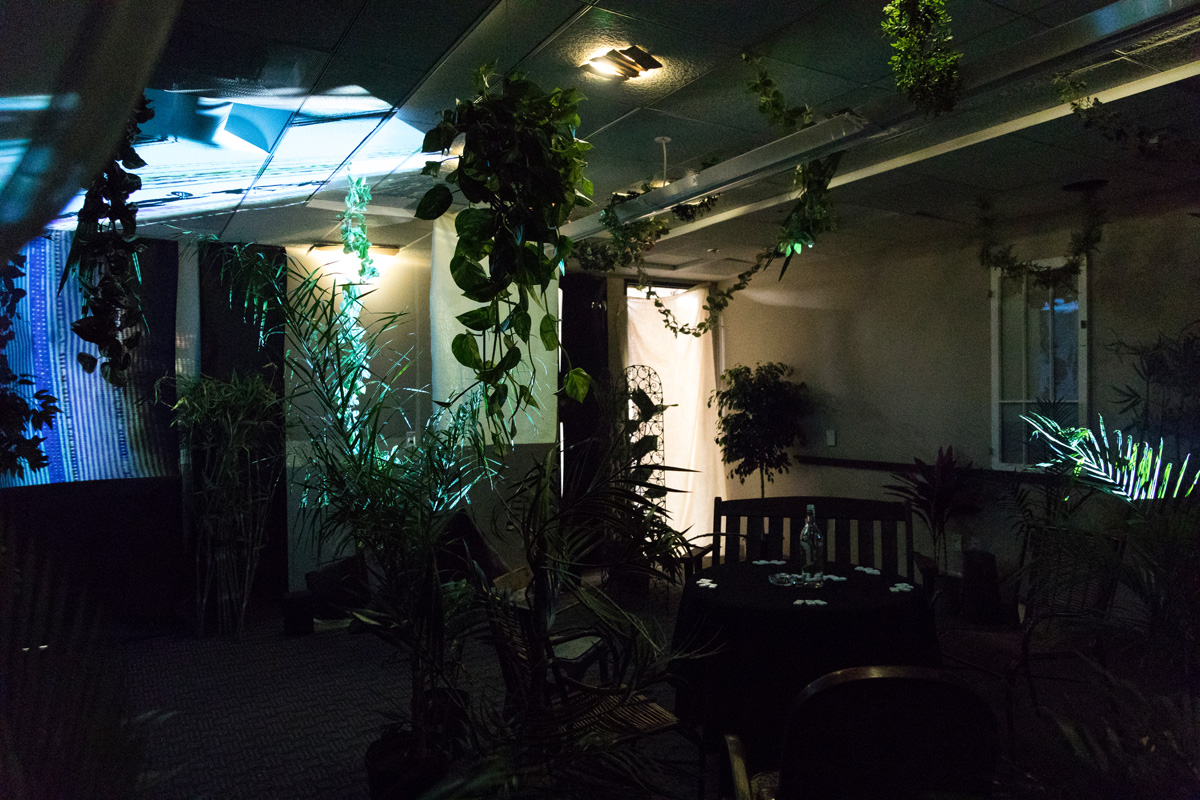 close
close
Tropical Mansion
Read moreRicardo Imperial
This immersive installation invited visitors to experience where ArtCenter students stayed during their Cuba experience: a tropical mansion that once housed military wives during Colonial times. Surrounded by lush green plants, the dark and humid courtyard replica was an intimate experience complete with a communal table and chairs where a game of dominos was set to be played. The sultry laid-back ambiance was punctuated by projected sounds and images of student visits to the Cuban countryside, memories brought back from the day to this evening place.
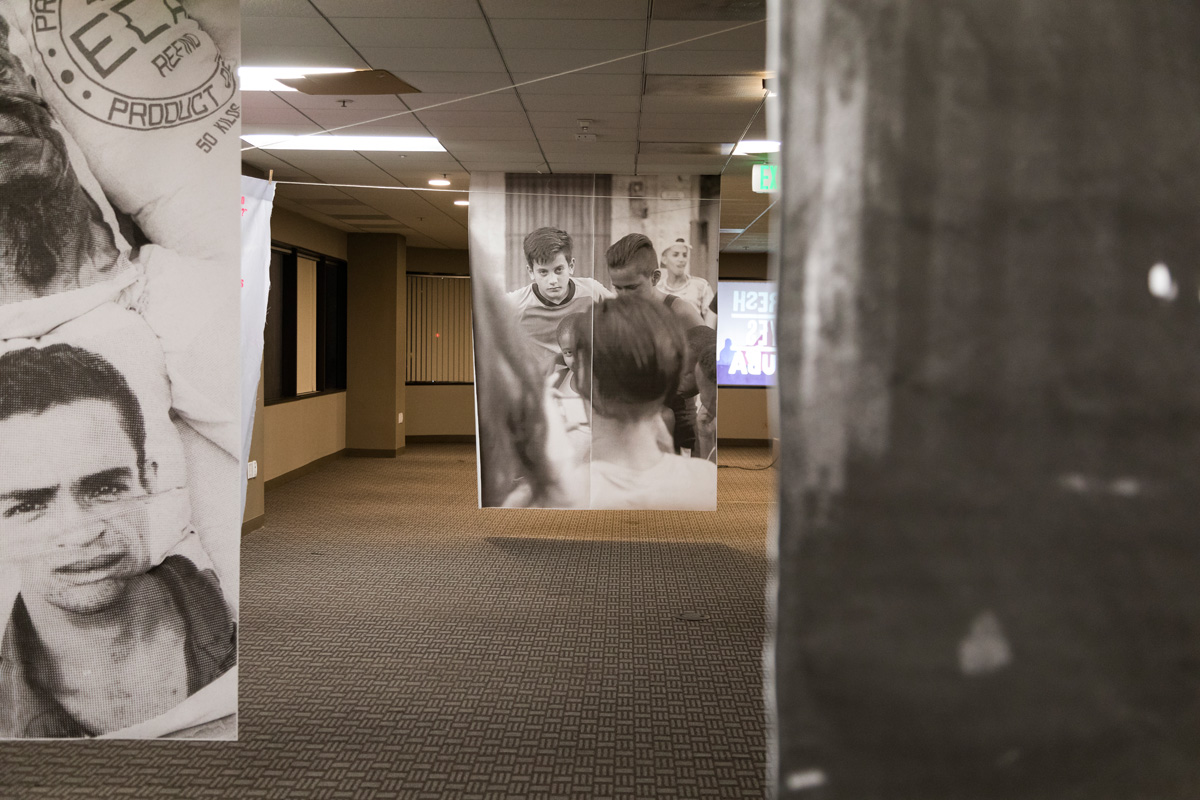 close
close
Fragmented Portraits
Read moreKarlo Francisco
Enlarged black and white photographs of Havana streets scenes were segmented and hung at slight angles from each other; visitors could view one aspect or the entire cut-up image (depending on where they are standing), providing a reflection on how outsiders often only see partial fragments of a total culture.
 close
close
Reclaimed Frames/Original Art
Read moreGrace Haynes
This mini-art gallery displayed students’ Cuban photographs artistically transformed into line drawings, paintings, and sketches. Assembled with repurposed wooden frames, the collage-like display was homage to the Cuban innovation of creatively reusing materials.
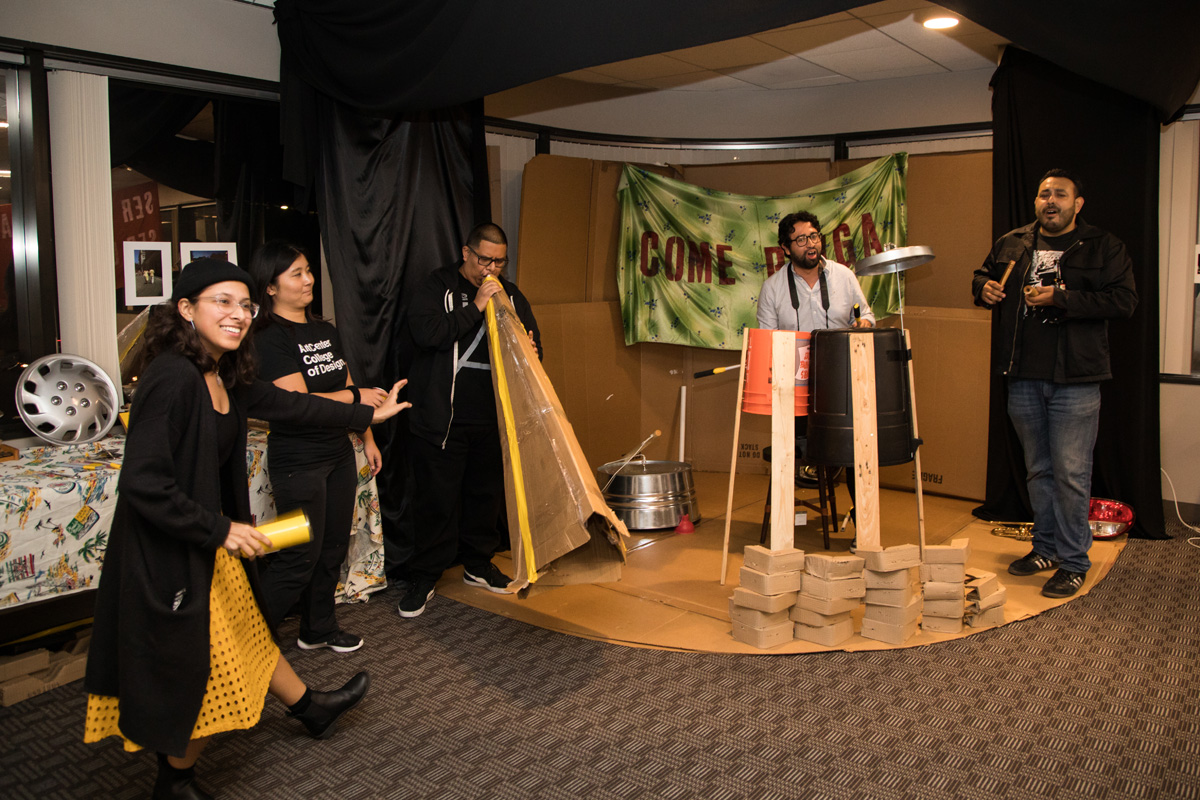 close
close
Salvaged Music
Read moreViviyan Zoechlin and Mickey Rosales
Combining Cuba’s love of music, community interaction and material resourcefulness, a makeshift stage and noise-making instruments were crafted out of cardboard pieces, cans, cigar boxes, trashcan lids and other ordinary materials. Visitors were encouraged to join one other on stage for an impromptu music jam session inspired by a Cuban street scene where musicians would often spontaneously perform.
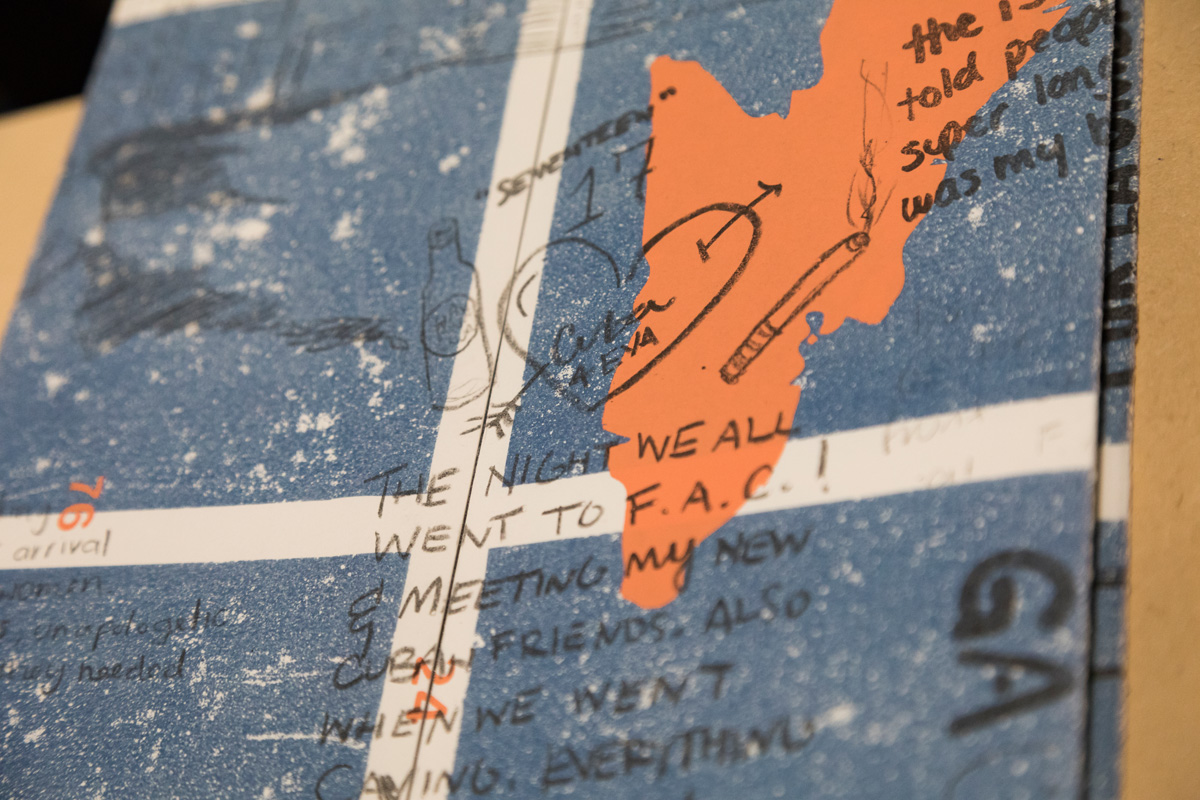 close
close
Hand-Bound Volumes: Cuban Reflections, Memory Book, and Cocktail Recipes
Read moreEric Veldez, Matthew Herrera, Mike Rosales
A collection of hand-bound books spotlight personal, communal and culinary experiences in Cuba. Employing student photographs and a narrative text, the Cuba reflection book contained impressions of a self-discovery journey amid the streets of Havana and other Cuba locations, weaving together writing from a Cuban writer with the student’s impressions. Similar to a high school yearbook keepsake, the memory book incorporated student signatures and messages superimposed on a large map of Cuba. The recipe book celebrated exotic Cuban cocktails and memories of discovering new potable delights with new and old friends.
 close
close
Cuba From the Bus
Read moreLuisa Betancur
Film footage projected onto an actual car window offered fast-paced glimpses of street and music scenes, architecture, and Cuban society with audio of a tour guide’s explanation. Presented from the viewpoint of a tour bus passenger, this partial imagery symbolized the limitations and barriers an outside tourist has encountering a new cultural environment.
 close
close
Interactive Projections
Read moreMatthew Herrera, Suyu Ren
Viewing photographs can be a passive experience; to encourage engagement, visitors used their own bodies to change projected digital images. Visitors standing at certain locations triggered sensors to display different scales of images from Cuba. Projected on the next wall was a video created by the ISDi students in Havana using the same interactive projection technique.
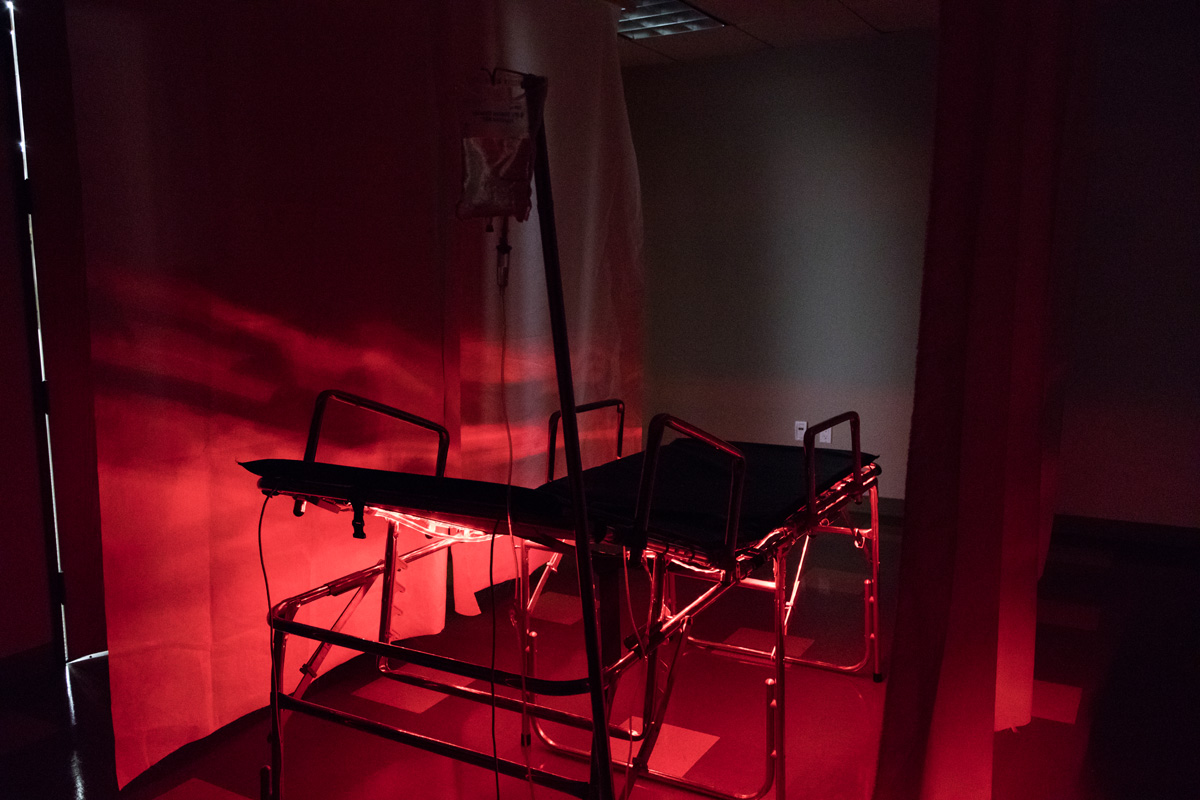 close
close
Cuban Hospital Room
Read moreTais Ghelli
A stark hospital bed sandwiched between hung white sheets presented an image of antiseptic uncertainty in this re-creation of a visit to a Cuban emergency room. The juxtaposition of upbeat Cuban songs from the radio drifted into the scene, which may have meant to soothe but added feelings of unsettledness.
Fresh Eyes Cuba Silhouetted Projection by Carlos Ignacio Romero (iSDI) + Matthew Herrera & Suyu Ren
Fresh Eyes Cuba Exhibition Promo Video
VLOG – Nicolas Ramirez
Forma 2017: Fresh Eyes Cuba Student Installation
-
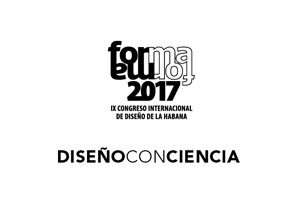
June 7 - 9th, 2017
-
Forma 2017
June 7-9 2017
Fresh Eyes Cuba Exhibition
Student Participants – Ricardo Imperial, Nicolas Ramirez, Suya RenThe Palace
Havana, Cuba
Press
Fresh Eyes Cuba Book
-
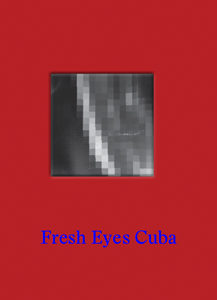
-
Fresh Eyes Cuba Book
The Fresh Eyes Cuba publication captures the cross-cultural experience of students and faculty from ArtCenter as they collaborated with students and faculty at ISDi on an intensive and immersive workshop in Havana, Cuba in October 2016.
Book Design – Tracey Shiffman with Ricardo Imperial and Simona Szabados, Shiffman & Kohnke
Photography – Nik Hafermaas, Tracey Shiffman, Mariana Somma, Victor Artiga Rodriguez, Luisa Betancur, Tais Bishop, Karlo Francisco, Grace Haynes, Matthew Herrera, Ricardo Imperial, Ye-Eun Kim, Nicolas Ramirez, Suyu Ren, Michael Rosales, Isaac Ruiz, Eric Valez, Viviyan Zoechling and Lucia Loiso
Published by Designmatters
Download PDF

A Note from the Project Initiator
This is a studio that represents a bit of a departure for the Designmatters portfolio and how we typically develop briefs to investigate creative questions rooted in social innovation. Often we put together very complex transdisciplinary projects with partners and nurture learning for our students that result in very tangible products, services, environments and communication tools that are then incubated and implemented beyond the walls of our studios. With Fresh Eyes Cuba we are making the intentional choice to start off with an open-ended and experimental brief that addresses art and design’s aesthetic dimension as a way forward for cultural immersion and change: we want to elicit self-discovery, intellectual curiosity, self-awareness, cultural diplomacy and engagement.
I guess you could say I am the official “instigator” of the project; I was very inspired by my first visit to Cuba in Spring 2016 and honored by the invitation of their premier Design Institution, ISDI to collaborate. I am ecstatic about what this incredibly talented and diverse team will accomplish.
